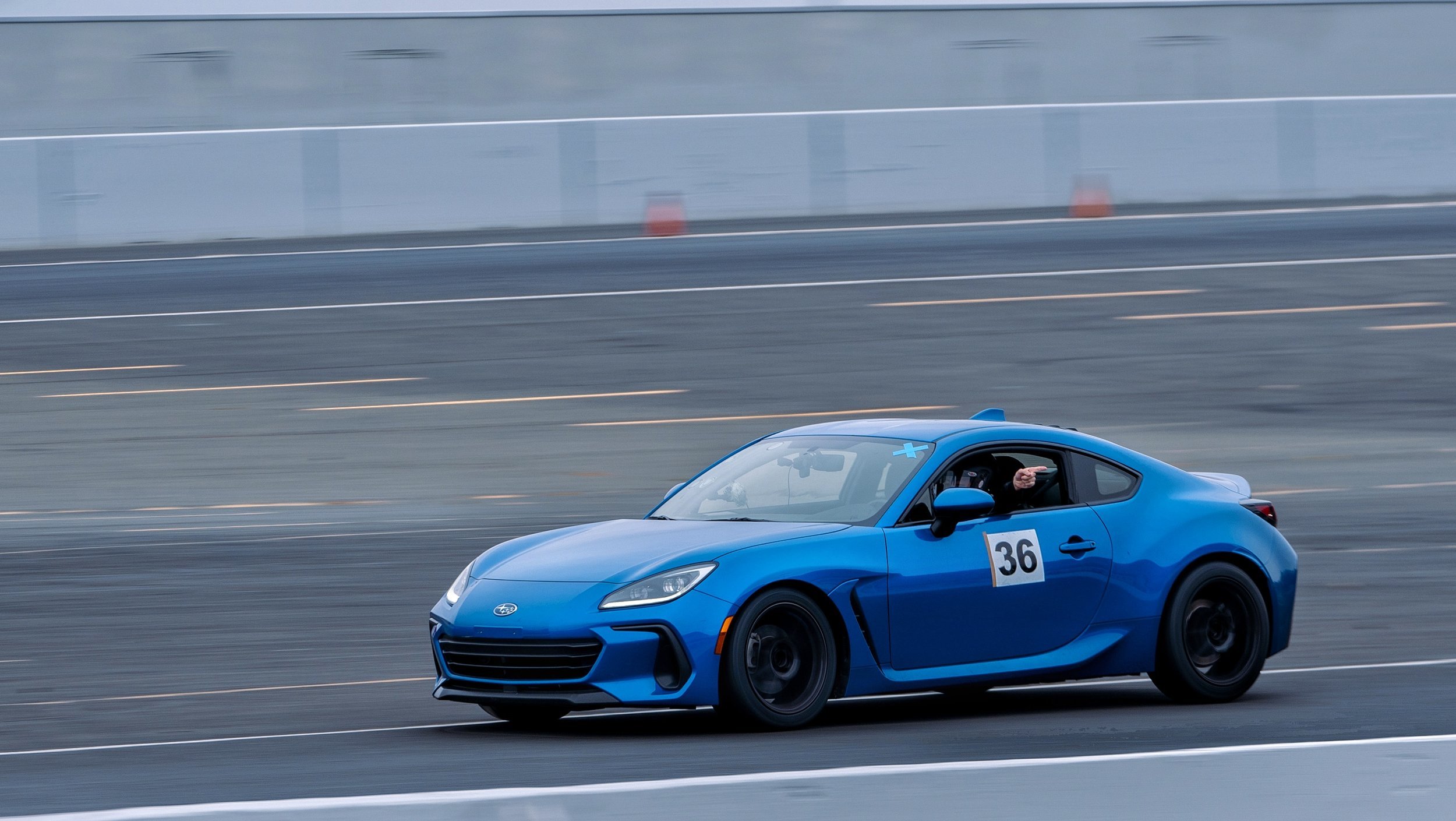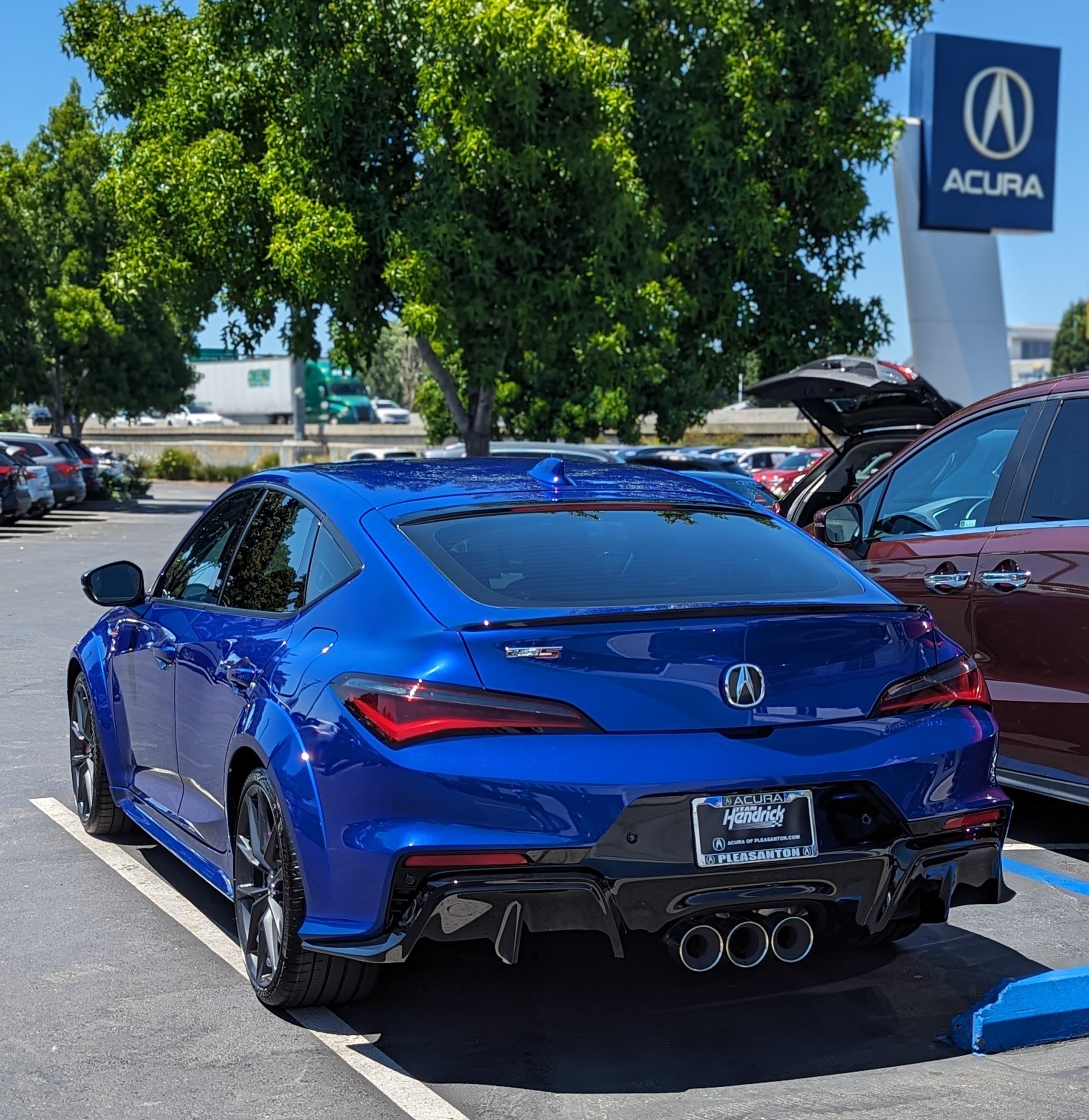Fenton's Integra Type S: A Change of Heart
“I used to be the biggest hater of FWDs,” he started. Despite his introduction to cars coming in the form of a Civic, he rapidly transitioned into rear-drive platforms when he took up track driving. After a pair of S2000s, he moved onto Porsche Caymans, 911s, and, most recently, a Subaru BRZ. What they all had in common was their rear-drive layout, which cemented in Fenton the belief that all other drivetrain configurations were beneath consideration.
Lately, he’s had a change of heart.
It was an unexpected decision to sell his BRZ. Oil starvation issues concerned him, but he had also owned the car for eighteen months and was starting to wonder what decent replacement was out there—something new, fun, and practical between fifty and sixty grand.
Actually, he was a little more particular than that:
1) It had to be track-capable.
2) It had to have been endorsed by Throttle House, savagegeese, or TheTopher.
3) It had to be at least as practical as the BRZ.
4) It couldn’t break the bank in the event of an incident.
Not much in that price range met his requests, but the faster Hondas, despite driving the wrong axle, were fairly close. But it was more than the drivetrain that deterred him at first.
“I remember when the base Integra was first announced, I thought Acura was disrespecting the Integra name. It looked like a boat; it had no resemblance to the DC2 or the DC5 and, I believed, was probably an overpriced Civic.”
A few months later, the Integra Type S was announced, and Fenton found himself torn. “I started to love the way it looked. Even though the general shape was the same, they tweaked the right areas to make it look like a driver’s car. This had proper flares, an aggressive rear diffuser, a vented hood, gaping intakes—it was unique and purposeful.”
“The Integra wasn’t really on my radar until, one day, I was bored at work and decided to configure a car on the Acura website. I specced out my ideal Type S, and figured I’d add my email to their list—why not?
The next day, Acura of Pleasanton, just seven miles from my house, contacted me and offered that exact car at MSRP plus $1,000 of non-negotiable dealer add-ons. One prospective buyer had backed out and my name came up on their list.”
At the time, he’d been considering the FL5 Civic Type R, though the markup was significant. Plus, the car has a number of creature comforts and tuning differences over the Civic that makes it a better daily. An Integra-specific re-tune of the K20C1 engine, shared between the two, provides much more mid-range torque. Additionally, the Integra’s electronic dampers benefit from new tuning to make it a more supple road car.
The case in favor of FWD was growing, but he still had his bias to overcome. “I used to believe that, if you cannot powerslide it out of a corner, it’s not a sports car.
However, he couldn’t find anything else under $60,000 that is spacious, has a backseat, has a manual transmission, is track-capable, and is rear-wheel drive. I realized that, in order to hit my price point, I’d have to make one or two concessions.
I figured I’d at least give the Integra a try. In person, it looked fantastic, and it felt like a $50,000 car inside. It was something I could live with on a daily basis. The shifter is nearly as good as a Honda S2000’s, the ride quality is phenomenal; with the dampers in comfort mode, it rides almost as well as a luxury car. It has minimal torque steer and phenomenal brakes. After driving it around the block, I was sold.”
He bought it that day.
Since then, he’s beaten nearly all of his previous bests. At Laguna Seca, Thunderhill East, and Thunderhill West, he’s beaten his bests in the BRZ by 2 to 3 seconds. Some of that has to be down to Integra having twice the torque, but, as Fenton’s learned, a FWD car might be easier to come to terms with.
“I can lean on the car more confidently, whereas the BRZ would break away more abruptly. I know that, on turn-in, it’s going to understeer, and while that might sound boring, it means I can get up to speed a little bit faster, especially on cold mornings.”
At Laguna Seca, he drove the tires off his car—literally. Underinflating the PS4S tires to try and keep them in their ideal range seemed sensible, but during turn-in to Turn 6, the front-right tire debeaded. “I only stopped a few feet from the wall. It taught me not to track 30-profile tires with soft sidewalls any longer.”
If there was one issue beyond that, it was the lack of support from the stock seats. “The OEM seats are inadequate for track driving; they are the same design as the base Integra with very little bolstering. The OEM FL5 seats are supportive and soft enough for daily driving and track duty. I’d happily exchange the Integra seats’ heating and electronic adjustability for the FL5’s greater versatility.”
And so he started adding the first round of modifications, beginning with a set of 18 x 9.5” + 45 Apex VS-5RS wheels wrapped in Kumho 265-35 V730s (the same as he had on his BRZ for fair comparison), as well as a set of Ohlins Road & Track coilovers.
The Road & Tracks have a reputation for being more road than track, but the Integra-spec 6kg front and 10kg rear springs are much stiffer than what’s normally offered. “The spring rates have helped a lot with tucking the nose. You can get consistent mid-corner rotation with a lift-off the throttle.”
Along with those mods, he added some Castrol SRF fluid and a set of Endless ME20 pads from RHD Japan since the yen is weak now. Their torque rating is much higher than the standard pads, which were at least resilient enough to run sessions at Laguna without fade.
With the first round of modifications in place, he took it to Thunderhill West and ran a 1:24 in his second session—some 2.5 seconds faster than he ever went in his hardcore S2000 on Federal tires. “It felt adjustable; it wasn’t a battle against understeer in every corner. You can transfer weight with the inputs and rotate the car in small, measurable increments. That’s something I find a modern GTI just won’t do.”
Most recently, Fenton ran Thunderhill East Bypass for a day that he found encouraging, if not a little frustrating. After spinning in the first session and getting the black flag, he found himself without traffic in the second session and logged a 2:01. “I believed I could find another one to two seconds in the third session, but one of the flaws of the car held me back.”
In order to completely avoid fuel starvation, the tank needs to remain above half-full. After dipping below the middle hash five minutes into his third session, he spent the remainder dealing with fuel cut. He couldn’t leave too miffed; he’d only had one real session to push the car, and with that 2:01 indicated on his Garmin, he’d already gone three seconds faster than he ever had in the BRZ.
Considering he’s only done three modifications and is already three seconds faster than the BRZ, he has no regrets. “I might not be powersliding it everywhere, but it’s taught me that there are other, subtler ways of manipulation.”
Beyond all this, I can drive to and from the track in complete comfort. With radar cruise control, lane-keep assist, blind spot monitoring, heated seats, a premium ELS sound system, and even a sunglasses holder—I’ve never been so comfortable on my way to and from the track before. Going from a partially gutted S2000, to my mostly-practical BRZ, to this, I’ve experienced three distinct improvements in comfort. Plus, I can ferry people around. There is plenty of space for four adults—roughly the interior space of an Accord from fifteen years ago.”
It’s still a little too quiet to hear with his helmet on, so he’s planning on upgrading to a modest exhaust that should make it easier to gauge where he is in the rev range, reduce backpressure, and find a little more grunt. That said, it’s not lacking in that department; it has more than enough torque to run third gear through most of Thunderhill West. Oh—it could use more front camber.
In Fenton’s eyes, it deserves to be seen as Acura’s flagship sports sedan—it’s a deserving successor to the DC2 Integra Type R. “It’s a compromised car at the end of the day, and yet they have kept all those compromises from adversely affecting driving enjoyment. To me, it’s the perfect compromise.”





